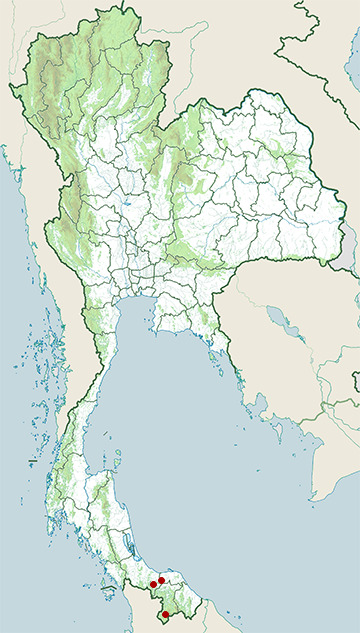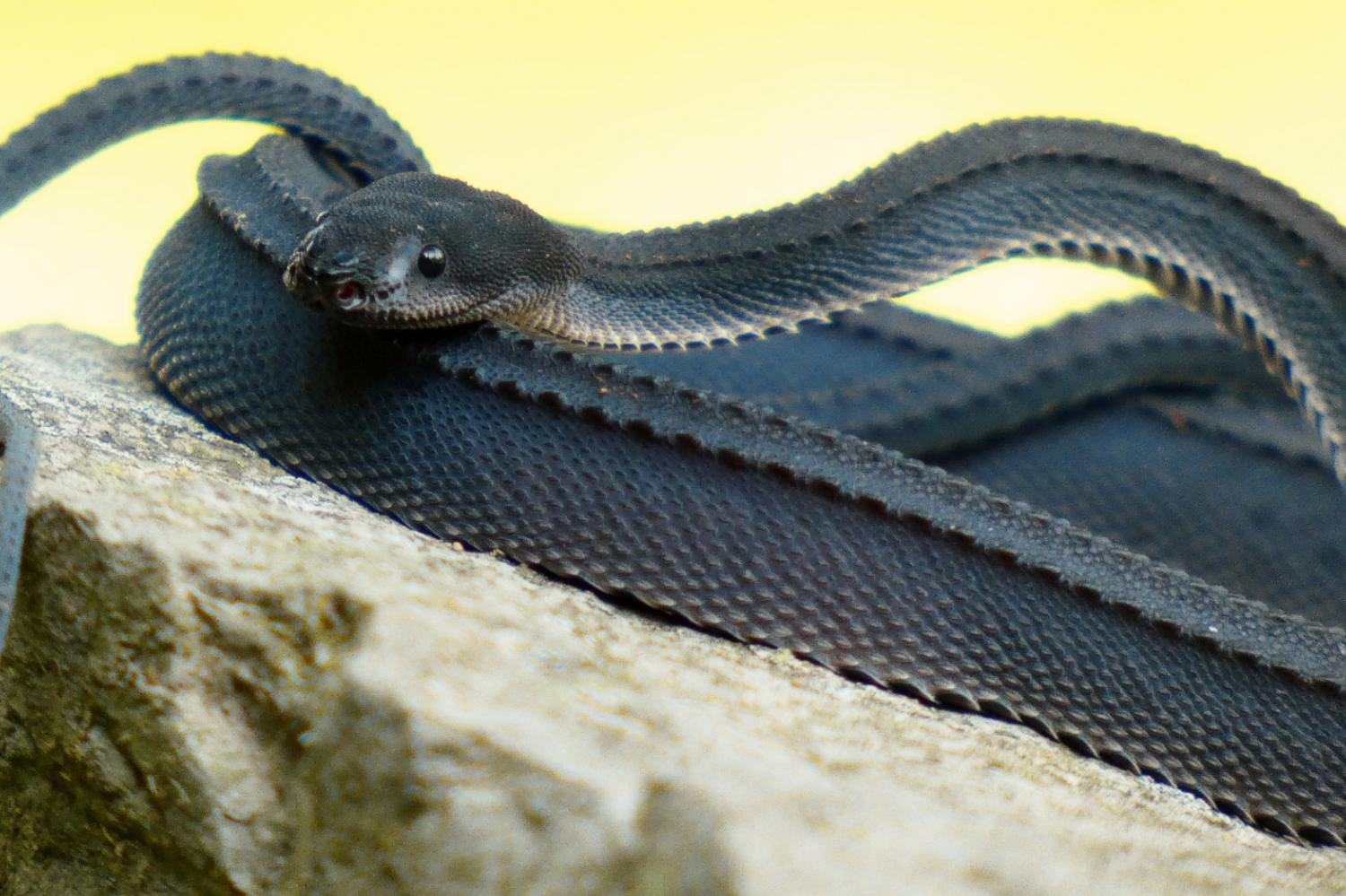Species of Thailand
Javan dragonsnake
Xenodermus javanicus
Johan Reinhardt, 1836
In Thai: งูขอนท้องขาว, ngu khon thong khao
Xenodermus javanicus, also known as the dragon snake, Javan tubercle snake, Javan mudsnake, or rough-backed litter snake, is a small non-venomous, semi-fossorial snake species belonging to the monotypic genus Xenodermus. This species is best known for their characteristic dorsal scales and interesting defense mechanism in which they stiffen their entire bodies when threatened. X. javanicus is nocturnal and subsists on a diet of frogs, tadpoles and small fish. While they are known to perish once placed into captivity, some herpetoculturists have been successful in keeping them.
Distribution and habitat
Xenodermus javanicus is found in the Malay Peninsula (Malaysia, Thailand, and one old record from the southernmost tip of Myanmar) and parts of the Greater Sunda Islands (Sumatra, Java, and Borneo, as well as some smaller islands). It inhabits damp areas near water, including forests, swamps, marshes, and rice fields, at elevations below 1300 m, but most commonly between 500 – 1100 m above sea level.
Description
Xenodermus javanicus has a distinct head and long tail. The body is slender and compressed. The total length is about 50 cm. Males can be distinguished from females by examining the overall size, tail thickness, tail length, and cloacal vent for the presence of a hemipenial bulge. Females will be larger than males and have thinner, shorter tails while lacking a hemipenial bulge. Conversely, males will be smaller in comparison, have thicker, longer tails and exhibit a hemipenial bulge.
Differentiation of sex chromosomes and karyotype characterization
Xenodermus javanicus has an unusual chromosomal number of 2n=32, contrasting with the most typical snake karyotype with a stable chromosomal number of 2n=36. The karyotype includes heteromorphic ZZ/ZW sex chromosomes with a heterochromatic W.
Breeding
Xenodermus javanicus undergo reproduction by egg and have low fecundity (2–4 eggs).
Activity pattern
Xenodermus javanicus are nocturnal.
Diet
Xenodermus javanicus subsist mainly on frogs, tadpoles and small fish.
Behaviors
Xenodermus javanicus exhibit a peculiar property when encountering perceived threats in which they stiffen their entire body to defend themselves. They may also emit a foul-smelling odour called musk.
Conservation status
Xenodermus javanicus are rare in the northern parts of their range, but are common in Java. There seem to be no major threats to them, and they can persist in wet agricultural lands such as rice fields. They could be potentially threatened by agricultural pollutants.
This article uses material from Wikipedia released under the Creative Commons Attribution-Share-Alike Licence 3.0. Eventual photos shown in this page may or may not be from Wikipedia, please see the license details for photos in photo by-lines.
Scientific classification
- Kingdom
- Animalia
- Phylum
- Chordata
- Subphylum
- Vertebrata
- Class
- Reptilia
- Order
- Squamata
- Suborder
- Serpentes
- Family
- Xenodermatidae
- Genus
- Xenodermus
- Species
- Xenodermus javanicus
Common names
- German: Java Höckernatter
- English:
- Javan dragonsnake
- Rough-backed litter snake
- Java tubercle snake
- Xenodermine snake
- Dragon snake
- Rough-bodied draogon snake
- Thai: งูขอนท้องขาว, ngu khon thong khao
Conservation status

Least Concern (IUCN3.1)
Photos
Please help us review our species pages if wrong photos are used or any other details in the page is wrong. We can be reached via our contact us page.
Range Map

- Betong District, Yala
- Namtok Sai Khao National Park
- Saba Yoi District, Songkhla

